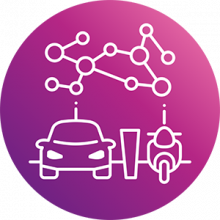
Watch our webinar on March 24th to learn about the business model of the Mobility as a Service (MaaS) concept implemented in Gothenburg and the experience which derives from the implementation and the analysis of monitoring results. The webinar aims to accelerate the knowledge exchange by highlighting experiences and by connecting demonstrations. It can help the follower cities to replicate MaaS concept of the Lighthouse cities to promote more sustainable urban mobility and better services to their citizens.
You can see the presentation slides on the IRIS SlideShare channel:
And the recordings on the IRIS YouTube channel:
Meeting Details
Agenda
- Welcome and introduction to IRIS project, Transition Track #3 (Smart e-mobility) and Integrated Solutions 3.2: (Innovative Mobility Services for the Citizens) – Jose Maria Salanova (CERTH).
- Brief presentation about Trivector and other partners that collaborate in IRIS project in the city of Gothenburg – Emma Lund (Trivector).
- Background with an introduction to the Swedish context – Emma Lund (Trivector).
- Presentation of the MaaS concept EC2B implemented in Gothenburg, including the business model – Bjorn Wendle (Trivector).
- Demonstrator 1: Presentation of the first monitoring results from the implementation of the MaaS concept EC2B in housing complex Brf Viva and the lessons learned so far – Bjorn Wendle (Trivector).
- Demonstrator 2: A light version of the EC2B service will be implemented in the Johanneberg University campus during 2020, focusing on business trips. A brief presentation about the activities planned – Bjorn Wendle (Trivector).
- Questions and Answers. During this session, Emma and Bjorn answered a lot of questions:
- How many people participated in the activities aiming to increase the awareness of people about MaaS?
- How do you see that the corona situation affects MaaS and people interest in sharing transportation?
- Who is supposed to pay for the implementation of the MaaS solution? How much of the cost for the services are covered by the funding – by the companies – by the users.
- Do you think the business model viable?
- How did you dimension the number of e-cars and bikes for Viva? How did you end up with the number now in used? How did you calculate this?
- How do you solve the potential problem of Viva-tenants having cars, but parking them in the neighbourhood instead of right by the Viva-building? Do you know how many per cent that do this?
- Could this new model be a threat for car manufacturers in Europe?
- Did you estimate how much money a family can save if it does not own a personal car but using alternative mobility?
- Who “owns” the initiative of doing hubs in Johannesburg Park – is it a city initiative and what role has the city in the demo and the procurement – and who is paying the process to get this in place (not the service)?
- Were e-commerce and increased use of delivery services taken into account? If affecting the need for mobility, maybe services regarding this in a building is part of the package in the future? E.g. cold boxes where deliveries can be left.
- How do you plan to scale-up?
- Any advice on how to replicate this solution in the Fellow cities?
- Do you have material that can be presented to property developers so they can think about replication? How do you see the use of an app by others, how much that will cost to a developer/housing unit, etc.
- Is the property owner providing you with their contracted mobility service providers (Sunfleet, etc.)? In the business model: How does that work with the kick-back model, and also at a potential scale-up with different customers who all have their own contracts with mobility service providers? Would you instead work like that, or with your contracted mobility service providers?
26 Feb 2020


